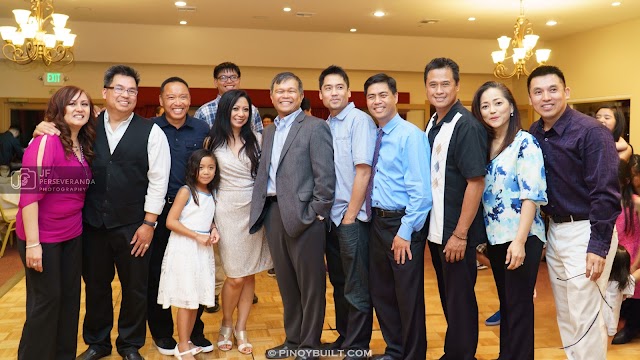Understanding Indigenous Peoples' Day | Voice of America
Indigenous Peoples Day asks us to reorient our memory and politics. In the United States it is a corrective and a public act of memory — a reclaiming of stories and place from a long history of dispossession, broken treaties, forced assimilation, and cultural erasure. For Filipino Americans, and Filipinos in the archipelago, the day resonates because our histories of colonization are entangled: the Philippines’ own centuries of Spanish and American rule reshaped land, language, religion, and memory. This post centers the plight and resilience of Indigenous nations in the U.S. — and then threads a transpacific narrative that ties those struggles to Philippine Indigenous histories and Fil-Am identity, inviting concrete steps toward decolonial solidarity.
Why Indigenous Peoples Day matters
Indigenous Peoples Day is more than a replacement calendar date. It is a public effort to stop celebrating conquest and to start recognizing Indigenous survival, sovereignty, and ongoing resistance. Across many U.S. states and municipalities, Indigenous Peoples Day reframes the narrative: instead of celebrating “discovery” or empire, communities commemorate living nations and their rights — and call attention to ongoing harms, from extraction on sacred land to the lingering trauma of boarding schools.
The day is also a call to action: treaty truth, land return, language revitalization, and institutional change. It is a moment for settlers and migrants alike to ask: on whose land do I live? Which nation’s sovereignty is being obscured by place names, monuments, or municipal holidays?
U.S. Indigenous realities: dispossession, boarding schools, broken promises
At the center of U.S. Indigenous histories is land: treaties were signed and then violated; reservation systems confined peoples to limited parcels while settler economies took the rest. The doctrine of discovery, paternalistic federal policies, and centuries of legal maneuvers enabled massive transfer of land from Indigenous nations to state and private hands.
One of the most devastating tools of cultural elimination was the boarding school system: Native children were removed from families, forbidden to speak their languages, forced to convert to Christianity, and subjected to physical and psychological abuse. The intergenerational harm of those schools — and the federal policies that enabled them — reverberates in health, education, and social outcomes across generations.
Today, Indigenous communities face underfunded health systems, jurisdictional confusion that weakens public safety and legal recourse, and the imposition of extractive projects (mines, pipelines, logging) on ancestral territories. Native place names are displaced by colonial maps. Yet throughout, Indigenous nations continue to hold governance, cultural knowledge, ceremony, and stewardship relationships with land and water. Indigenous Peoples Day is a reminder of that living continuity.
From U.S. reservations to Philippine mountains: structural parallels
At first glance, the U.S. experience and the Philippine Indigenous histories may seem distinct. But both share structural logics of colonial dispossession and cultural suppression: categories that make land “public” or “state” land; institutions that privilege extractive capital over local consent; schooling and missionary practices that degrade Indigenous language and ritual; and narratives of “progress” that justify displacement.
In the Philippines, Indigenous Cultural Communities and Indigenous Peoples (ICCs/IPs) — the Aeta, Ati, Igorot, Ifugao, Lumad, Mangyan, and others — carry deep ecological knowledge and ancestral governance that predate Spanish and American arrival. Spanish and later U.S. rule introduced land surveying, private property regimes, and economic models that reframed ancestral territories as resources for logging, mining, plantations, or infrastructure projects. After independence, the modern Philippine state inherited many of those legal structures, and Indigenous communities have continued to fight for recognition, protection, and enforcement of their ancestral domain rights.
Coloniality and erasure: how memory is reshaped
Colonial projects succeeded in part through rewriting stories. In both U.S. and Philippine contexts, school curricula, maps, place names, and state rituals reproduced a history that centers conquerors, not the colonized. Indigenous spirituality and governance were delegitimized. Languages were blasted into the margins. The effect: whole generations internalized a hierarchy of culture and a sense that modernity was synonymous with abandonment of ancestral ways.
Decolonization requires memory work — the careful task of reintroducing erased names, retelling suppressed histories, and making space for Indigenous epistemologies in the classroom and the public sphere.
Fil-Am identity: between colonial inheritance and Indigenous roots
Filipino American identity is formed in the shadow of the Philippines’ unique colonial history. For decades the archipelago was a Spanish colony (starting in the 16th century) and then a U.S. insular territory after 1898; those centuries of external rule shaped migration, legal status, and cultural identity. As a result, many Fil-Ams carry layered identities — Catholic rituals from Spanish influence, English as a colonial language, plus regional and Indigenous substrata that are sometimes hidden.
Moreover, because Filipinos were once U.S. nationals under American rule, migration flows to the U.S. were shaped by unique colonial ties. In diaspora, Filipinos often found themselves navigating U.S. racial formations, model minority myths, and invisibility within broad “Asian American” categories. Embedded in those identities is a history of erasure: Indigenous Filipino genealogies were marginalized by national narratives that celebrated colonially shaped languages and elites.
Resistance & resilience: stories that push back
Resistance is not an occasional outburst — it is a continuous thread. In the U.S., Indigenous resistance takes many forms: treaty enforcement campaigns, land reclamation efforts, language and ceremony revitalization, legal advocacy, and everyday acts of cultural transmission. The courage and creativity of grassroots movements are present wherever Indigenous communities organize to defend water, forests, sacred sites, and legal rights.
In the Philippines, too, Indigenous communities have resisted assault on their territories. The Chico River struggles of the 1970s, opposition to mining in Mindanao, the Lakbayan marches to bring Indigenous demands to the capital, and a long record of local mobilizations show persistent defense of land and culture. Laws like the Indigenous Peoples’ Rights Act (IPRA) of 1997 set up important frameworks for recognition — but implementation remains contested. The common thread is clear: where law and policy lag, communities organize.
Decolonial praxis: what decolonization actually looks like
Decolonization is more than symbolic change. It is a set of practices that remake relationships to land, language, knowledge, and governance. For diaspora Filipinos and U.S. settlers, decolonial praxis includes several concrete moves:
- Center Indigenous leadership. Solidarity must mean following the priorities set by Indigenous communities themselves — providing resources, amplifying their demands, and ceding space.
- Land reparations and return. Recognize that land is not a commodity to be parceled out, but a relational foundation for political and spiritual life. Support land-return initiatives, tribal land trusts, and community governance structures.
- Cultural revitalization. Fund language programs, community archives, ceremonies, and intergenerational knowledge transfer — both in the U.S. and the Philippines.
- Education reform. Push for curricula that integrate Indigenous histories as living, contemporary realities rather than museumized footnotes.
- Resist extractivism. Oppose mining, pipelines, dams, and logging projects imposed without free, prior, and informed consent (FPIC).
Solidarity across borders: how Fil-Am communities can act
Fil-Am communities are uniquely positioned to build transpacific solidarities. We do not stand isolated from U.S. Indigenous struggles — in many ways, the same colonial powers and economic logics shaped both contexts. That creates opportunities for mutual learning and coordinated campaigning around extractive corporations, military footprints, and climate impacts that cross borders.
But solidarity must be accountable. It requires sustained relationships, shared platforms, and the humility to follow Indigenous leadership. It is not enough to sign petitions or post a hashtag; solidarity is about persistent listening, funding, legal support, and structural advocacy.
Practical actions for readers — local, diasporic, and transpacific
Here are concrete steps PinoyBuilt readers can take right now:
- Learn whose land you occupy. If you live in the U.S., find the Indigenous nations historically connected to your city or county. Use your platforms to give them presence and voice — and then support them with time or funds.
- Attend and support Native and Indigenous events. Join ceremonies, film nights, and educational programs led by Indigenous organizers. Show up early and bring resources.
- Defend ancestral land rights in the Philippines. Support Indigenous-led Philippine NGOs that do mapping, legal defense, and community development — especially groups fighting mining or forced displacement.
- Push for curriculum change. In schools, community centers, and churches, ask for programs that integrate Indigenous histories and living cultures.
- Support language revitalization. Donate time or funds to language classes, oral history projects, and digital archives that preserve Indigenous speech and stories.
- Make land acknowledgments with substance. If you use land acknowledgments, pair them with a pledge — donate to local tribal programs, lobby for place-name restorations, or partner in land stewardship.
- Center Indigenous authors and artists. Read, promote, and commission works by Indigenous writers, filmmakers, and artists from the U.S. and the Philippines.
Memory, art, and renewal: narrative as a field of struggle
Public memory is contested terrain. Monuments, holidays, and historical narratives shape public imagination and policy. When Indigenous stories are omitted, policies that harm Indigenous peoples are easier to rationalize. That’s why art and cultural work are political. Visual art, poetry, song, documentary, and digital storytelling recover the textures of living memory and make political claims legible to broader publics.
Filipinx artists can explicitly stage cross-border work: film festivals that pair Native American and Philippine Indigenous cinematic work; photo series that trace extractive capitalism from the mines of Mindanao to global commodity chains; oral history projects that map family memory alongside ancestral stewardship of land and sea.
Toward a future of return
Decolonization is not a single act; it is a long, committed process of rebuilding relations and remaking polity. For Indigenous nations in the U.S., it can mean the restoration of lands, the reassertion of legal and governance autonomy, and regeneration of language and ritual. For Philippine Indigenous communities, it means securing ancestral domain, defending against extractive projects, and asserting self-governance.
For Fil-Am communities, it means holding two truths at once: acknowledging our own colonial inheritance while standing accountable to Indigenous struggles both in the U.S. and the Philippines. Decolonial solidarity asks for humility, long-term commitment, and the willingness to reframe our public memory and policies.
Conclusion — a promise and a practice
On Indigenous Peoples Day, we pause to remember what was taken, to honor those who endured, and to recommit to the work of return. Memory without action remains sentiment; action without listening becomes paternalism. The challenge for readers is to hold memory and action together: to learn, to fund, to lift Indigenous leadership, and to build cross-border alliances that press for justice.
May this day, and every day, push us closer to a world where ancestral lands are recognized, languages are spoken freely, laws respect Indigenous governance, and diaspora communities — including Filipinos in the U.S. — stand in reciprocal solidarity. May Indigenous futures be more than a memory: may they be a living, growing reality.
Sources / For more reading
- The New York Times — coverage on Indigenous issues and boarding school histories
- Reuters — reporting on Indigenous land conflicts and environmental impacts
- BBC — analysis and features on Indigenous Peoples Day and global Indigenous struggles
- Rappler — reporting and opinion on Indigenous issues in the Philippines
- Associated Press — reporting on treaty, legal, and policy developments affecting Indigenous nations
- Al Jazeera — features on extractive economies and communities' resistance
- Mother Jones — investigative pieces on extractive industries and Indigenous resistance
- The Atlantic — longform essays on colonial legacies and memory
- Washington Post — reporting on U.S. Indigenous policy, boarding schools, and land returns
- Bloomberg — analysis on economic drivers behind extractive projects
- Overview: Indigenous peoples of the Philippines (background on ICCs/IPs)
- Indigenous Peoples' Rights Act (IPRA) — full text and summary
- Lakbayan ng Pambansang Minorya — annual national mobilization
- Facing History — resources on Indigenous Peoples Day and historical context
- United Nations — International Day of the World's Indigenous Peoples
Labels
indigenous, decolonize, landrights, ancestral, resistance, resilience, fil-am, filipino, fahm, solidarity, climate, environment, history, activism, education, language, culture, diaspora, sovereignty, rights





















0 Comments
Hi! Thank you for dropping by. Please leave us a comment.